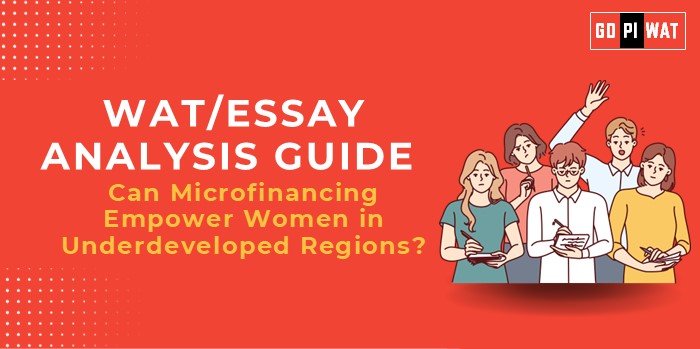📋 Can Microfinancing Empower Women in Underdeveloped Regions?
🌐 Understanding the Topic’s Importance
Microfinancing aligns closely with the United Nations Sustainable Development Goals (SDGs), tackling issues like poverty, gender equality, and economic growth. It has emerged as a powerful tool to empower women in underdeveloped regions by promoting entrepreneurship and financial independence. Analyzing this topic tests a candidate’s understanding of global development strategies and their ability to propose actionable solutions.
🗓️ Effective Planning and Writing
- ⏱️ Time Allocation:
- Planning: 5 minutes
- Writing: 20 minutes
- Review: 5 minutes
- 📚 Preparation Tips:
- Identify key achievements, challenges, and case studies.
- Organize evidence for balanced arguments.
📚 Structuring the Essay
- Introduction: Use contrasting data or a historical timeline to set context.
- Body:
- 🏆 Achievements: Highlight success stories like Grameen Bank and statistics showing microfinancing’s impact.
- ⚠️ Challenges: Discuss barriers like high interest rates and limited accessibility, comparing international contexts.
- 🔮 Future Outlook: Propose solutions, such as interest rate subsidies, digital platforms, and financial literacy programs.
- Conclusion: End with a balanced or forward-looking perspective emphasizing sustainable impact.
📄 Sample Short Essays
- ⚖️ Balanced Perspective: “Microfinancing has undeniably empowered millions of women in underdeveloped regions by fostering entrepreneurship and financial independence. However, challenges like high interest rates and limited coverage demand innovative solutions such as digital lending and capacity building to ensure its sustainability.”
- 💡 Solution-Oriented: “By integrating technology and partnerships with NGOs, microfinancing can overcome its challenges and empower women to lead economic transformations in underdeveloped regions.”
- 🌍 Global Comparison: “Learning from Bangladesh’s success and Kenya’s digital advancements, microfinancing must evolve to address systemic barriers and maximize its potential in transforming women’s lives.”


